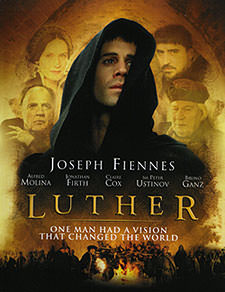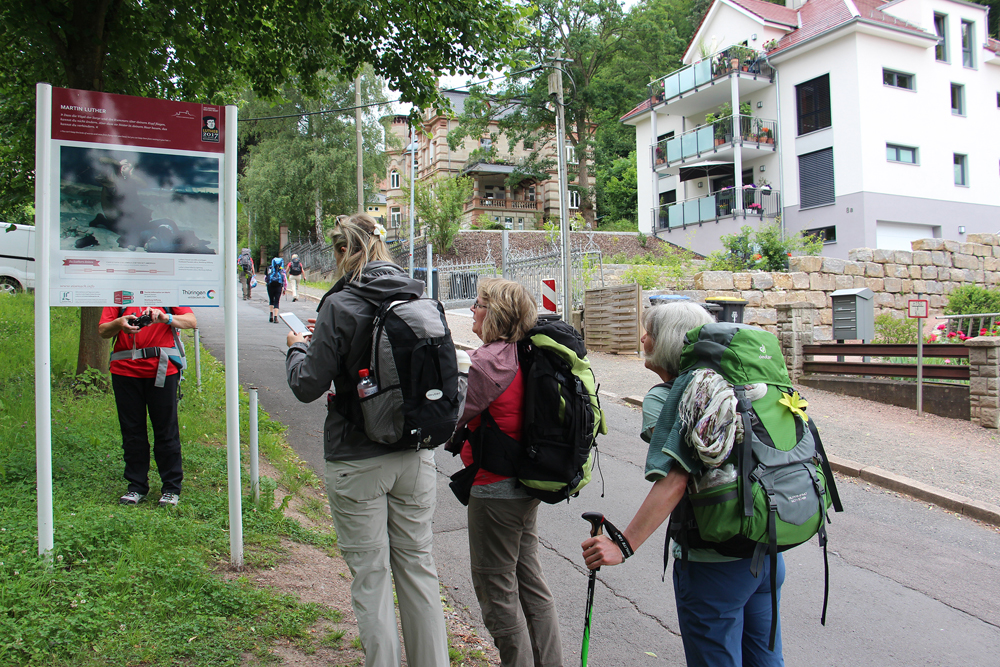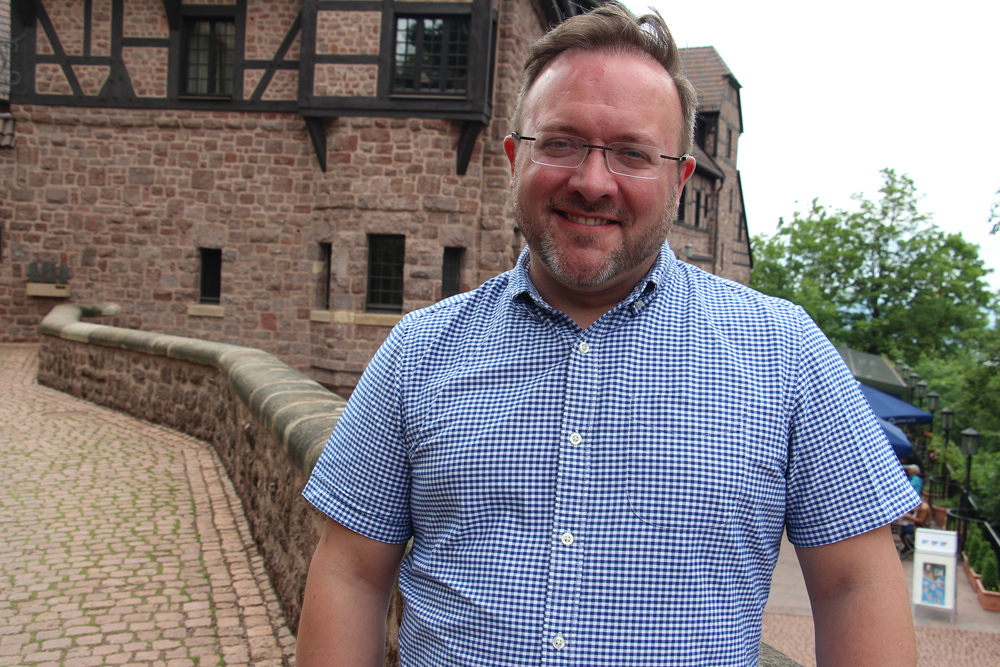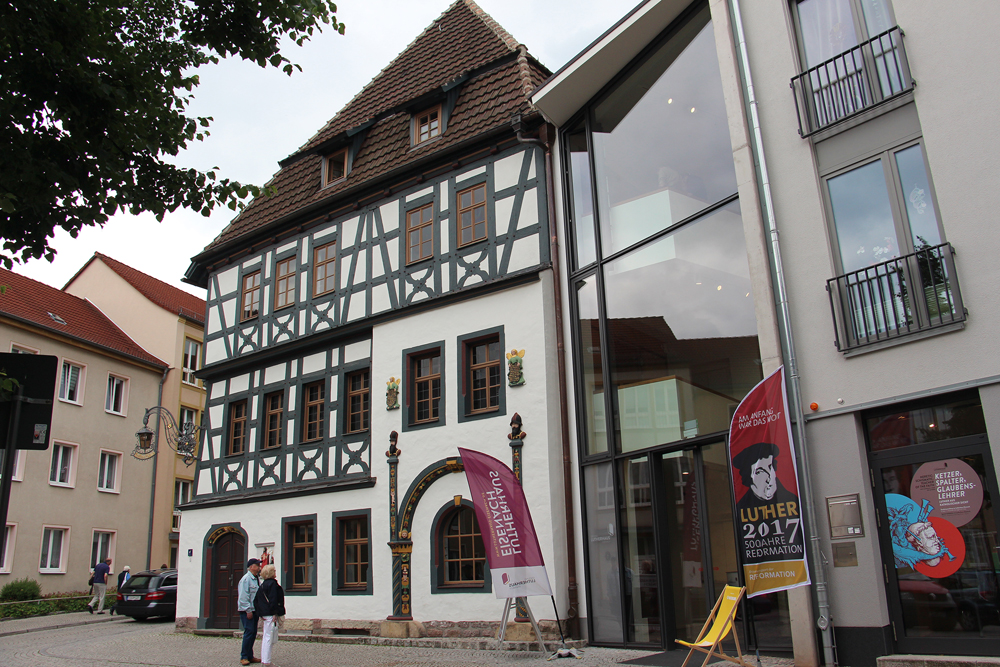
EMILY MCFARLAN MILLER reports from Germany for Religion News Service…
As the American pilgrims approached Wartburg Castle, they let their imagination rewind five centuries to the night when Martin Luther was “kidnapped” by masked horsemen and hustled deep into the forest.
The German monk-turned-reformer’s life was in danger after his writings were deemed heretical by Roman Catholic leaders and he gave his defiant “Here I stand” speech at the Diet of Worms, so a prince who was concerned about his safety ordered the abduction.
The pilgrims walked up the steep hill to the castle, where Luther spent 10 months from 1521 to 1522 in hiding, and one of them huffed, “No wonder they never found him!”

ON THE PILGRIM TRAIL: Hikers follow the Luther Adventure Trail up to the Wartburg Castle. PICTURE: RNS/Emily McFarlan Miller
“When you see the actual layout of the things that you’ve read about, it’s just amazing. It becomes so much more vivid and lifelike. It’s really emotional.”
– Patte Edwards of Wheaton, Illinois, in the US.
The group was on a 10-day tour of Luther Country – sites in Germany that played an important role in the reformer’s life – conducted in June by St Paul-Reformation Lutheran Church in St Paul, Minnesota, to coincide with the 500th anniversary year of the Reformation.
“It was amazing to imagine what it must’ve been like,” Patte Edwards of Wheaton, Illinois, said over lunch after the trek up to the castle.
“When you see the actual layout of the things that you’ve read about, it’s just amazing. It becomes so much more vivid and lifelike. It’s really emotional.”
The Americans also visited Eisleben, where Luther was born and died; Erfurt, where he studied at university and then entered the Augustinian monastery; and Leipzig, where he famously debated Johann Eck and where Johann Sebastian Bach later composed the music of the Reformation.
The irony of a Luther pilgrimage, given that it was one of the Catholic spiritual practices Luther himself was bent on reforming, was not lost on Rev Patrick Shebeck, pastor of St Paul-Reformation.
“For all of Luther’s vehemence against the veneration of relics, that’s exactly what we’re doing,” Rev Shebeck said.
Planeloads of Protestants have been visiting Germany in the year leading up to 31st October. On that date in 1517 Luther reportedly nailed his 95 theses – or objections to Catholic practices – to the Castle Church door in Wittenberg, sparking the Reformation.
Across central Germany, “Luther 2017” banners hung from towers and city halls, bearing Luther’s cartoon face and the phrase “Am Anfang war das Wort” – “In the beginning was the Word” – a reference to his emphasis on Scripture alone.
The Wartburg Castle, the Lutherhaus in Wittenberg – the former cloister where Luther and his wife Katharina von Bora made their home – and the Deutsches Historisches Museum in Berlin all are hosting national exhibitions related to Luther and the Reformation.

SURPRISED?: St Paul-Reformation Pastor Patrick Shebeck agreed the tour was something like a Lutheran pilgrimage, something that would have surprised Martin Luther. “I think like a juvenile way of viewing relics or pilgrimage is it’s a magical thing – it has magical powers – but why have people done that over the centuries?” Rev Shebeck said. PICTURE: RNS/Emily McFarlan Miller
Wittenberg, the town perhaps most closely linked to Luther and the Reformation, was expecting to double the number of visitors this year, by official estimates. The town gets about one million visitors in an average year, and tourism was up 12 per cent through March, before the busy summer travel season and fall anniversary, according to Elke Witt, manager of the Welterbe Region.
Wittenberg hosted a World Reformation Exhibition during the summer and erected a 360-degree panorama installation by artist Yadegar Asisi showing what the town might have looked like in 1517. Its two churches – the Castle Church and St Mary’s, the “mother church” of the Reformation – had been closed years in advance for restoration work.
Kurt Hendel, a retired professor of Reformation history at the Lutheran School of Theology at Chicago, has led a half-dozen travel seminars in the past two decades for the Evangelical Lutheran Church in America, the largest Lutheran denomination in the US.
At first, he didn’t think of it as a pilgrimage. But, he said, “It became very apparent to me very quickly.
“The person, the place – that impacts you affectively, not just rationally,” said Dr Hendel, who accompanied the group from St Paul. “It affects your feelings, your soul, rather than just your brain where you gather information and take pictures and say, ‘Oh, that’s right, that was the city church.’”
It puts not flesh and blood, but “stone and timber” to sites many people only have read about, according to Mark Hollabaugh of Woodbury, Minnesota, who helped organise the trip for St Paul-Reformation.
Mr Hollabaugh recalled stumbling into a rehearsal of a cantata for the Bach Festival at St Thomas Church in Leipzig.
“Here we are, listening to Bach, and there he is, 20 feet away under several feet of stone, I’m sure. Here we are in the church he wrote the music for, listened to the music,” he said. “It was just overwhelming.”
The impact of the trip also has to do with identity, according to Dr Hendel. Many Lutherans grew up hearing stories about the reformer from their parents and pastors and memorising “Luther’s Small Catechism,” and many can trace their ancestry to Germany.
But for Rev Shebeck, St Paul-Reformation’s pastor, one of the most moving moments of the trip came not at one of Germany’s many Luther sites. It was at Buchenwald, the World War II concentration camp for Jews. Hendel had talked with the group there about Luther’s anti-Semitic writings, later used as Nazi propaganda.

TOUCHING THE PAST: The Lutherhaus in Eisenach, thought to be where Martin Luther lived with relatives while attending the Latin School as a child. PICTURE: RNS/Emily McFarlan Miller
“I think people want a saint to be perfect, and I think saints are probably real,” he said. “They’re not perfect.”
Neither are pilgrimages “magic,” the pastor added. But people continue to make them, even Lutherans, because “physical places have a sort of power or energy that people can feel.”
“If you go to a place where something happened, it doesn’t matter if you’re Lutheran or Catholic or whatever – I think there’s a human need for physicality,” he said. “To see the door (of the Castle Church) or to see the Wartburg (Castle) helps people to understand better and to make it part of their own story.”
Rev Shebeck doesn’t think Luther is rolling in his grave at the idea his followers are making a pilgrimage to it.
“I think it’s OK,” he said. “Nobody is praying to Luther or thinking their salvation is dependent on this.”
Reporting from Germany on the 500th anniversary of the Reformation was made possible in part by funding from the German National Tourist Board.





